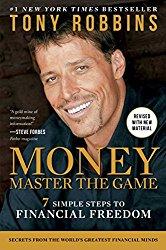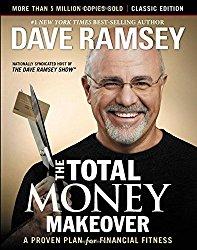Among people who buy individual stocks, there are a lot of people who think of it as some sort of game. They enjoy taking a position, watching it like a hawk, and then jumping out. They are hoping that the stocks they buy will go up almost instantly, then ideally come crashing down after they sell so that they don’t feel like they missed out by selling too soon. They watch constantly for news, trying to out think the thousands of professional traders who have all sorts of information and trading tools at their fingertips. They want to have war stories about their trades to share around the office.
Other people who get into stock investing try to develop a system, much as some do at the craps table. They hold a stock for a while, then sell if they make 10 or 20%. They sell if they lose 10%. They may try to time the market, selling when they hear bad news or buying when they hear good news. They may have a system where they assign a value stocks and buy if they drop below a threshold, or find stocks with good momentum, or maybe just trade every third Tuesday.
There are a lot of people with systems, and most of them end up with little to show over the long run. The fact is, while some people have short streaks, very few people will beat “the market,” meaning the return provided by a low-cost mutual fund over many years. The longer the time period, the lower the chance of beating the market.
There are some people who do beat the market, however. These people buy into a great company or two early in its life and ride it while it grows into a name-brand. Things like Microsoft, Apple, Exxon, or Wal-Mart. These people hold these stocks through some bad times when no one else wants to own them. They ignore the analysts who are panning the stocks. They are committed for the long-term. Really, buy-and-hold is the only way that an individual can beat the market, and the ability to do so gives the individual investor a huge advantage over the institutional investor. Even if you have most of your money in mutual funds, if you are going to dabble in individual stocks at all, buy-and-hold is the best strategy. Some reasons are as follows:
1. Buy-and-hold is low-cost: Even if you use a full cost broker and pay $300 to buy 1000 shares of a stock, if you are holding the company long enough for a return of tens of thousands of dollars, the trading cost will matter little. Try trading several times a month, however, and even those discount broker fees will add up.
Learn to master your money with these great books from Amazon:


2. Buy-and-hold is tax deferred: Because you don’t pay capital gains taxes on a price gain on a stock until you sell and make a profit, your investment will compound tax-deferred when you buy and hold. If you are selling regularly, you’ll need to pay taxes on any gains, leaving you less to reinvest.
3. It is easier to predict which stocks will go up over long periods of time than short periods of time: With buy-and-hold, you only need to be right about which stocks will grow . You don’t need to get the timing right. If you are trading stocks, you need to figure out which stocks will go up immediately and figure out when to sell before a decline. This is a lot harder.


Coffee Variety Sampler Pack for Keurig K-Cup Brewers, 40 Count
San Francisco Bay OneCup, Fog Chaser, 80 Single Serve Coffees
KRUPS F203 Electric Spice and Coffee Grinder with Stainless Steel Blades, 3-Ounce, Black
4. Most market moves happen over short periods of time. While the long-term return for stocks is in the 10-15% range, the return over any given period of months varies considerably. There are a few, huge months where stocks grow by 20-30% or more and a lot of months where nothing really happens. If you are sitting on the sidelines when one of these moves happens, you’ll be way behind the game.
5. Buy-and-hold is a lot less stressful and requires a lot less time. If you are constantly trading, you end up second guessing yourself. If the market swoons, you worry about whether it will continue down further and you need to sell, or whether it is ready to rally and you need to buy. If stocks rally, you worry about whether it is approaching a top and you need to pull money out. If you are holding stocks for long periods of time, you might buy a few shares if the market sells off drastically and you have some cash, but if not you just go about your life, knowing the market will recover eventually.
If you’re looking for entertainment, trading stocks can be fun. If you’re serious about growing wealth, however, buy-and-hold is the only way to go.

Have a question? Please leave it in a comment. Follow me on Twitter to get news about new articles and find out what I’m investing in. @SmallIvy_SI
Disclaimer: This blog is not meant to give financial planning or tax advice. It gives general information on investment strategy, picking stocks, and generally managing money to build wealth. It is not a solicitation to buy or sell stocks or any security. Financial planning advice should be sought from a certified financial planner, which the author is not. Tax advice should be sought from a CPA. All investments involve risk and the reader as urged to consider risks carefully and seek the advice of experts if needed before investing.
